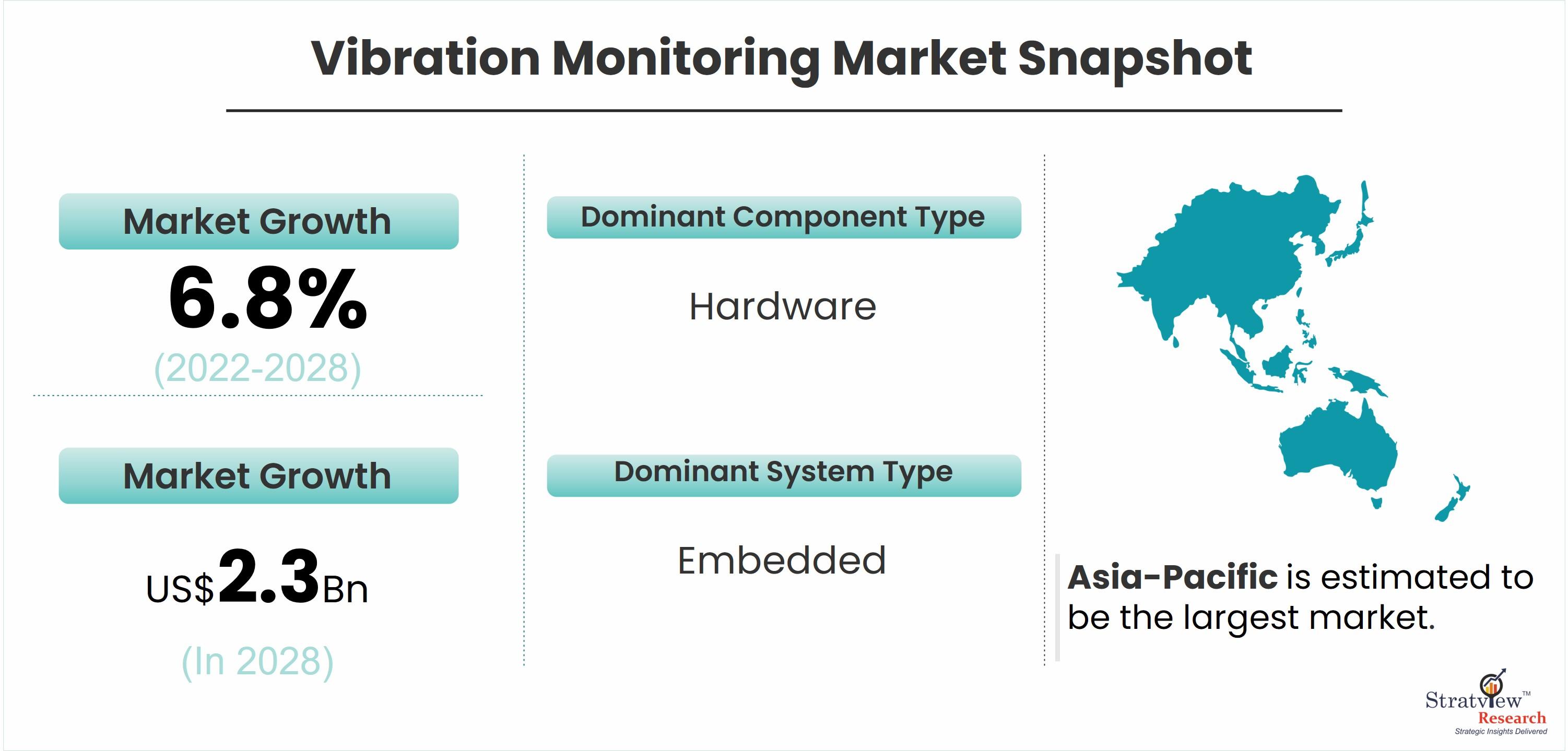The Future of the Vibration Monitoring Market: Emerging Trends and Innovations

The vibration monitoring market is poised for substantial growth, driven by technological advancements, the increasing adoption of predictive maintenance strategies, and the integration of IoT and AI. Vibration monitoring, a critical component in industrial maintenance, helps detect anomalies and prevent equipment failures. As industries continue to prioritize operational efficiency and asset longevity, several emerging trends and innovations are shaping the future of the vibration monitoring market.
According to Stratview Research, the vibration monitoring market was estimated at USD 1.45 billion in 2021 and is likely to grow at a CAGR of 6.8% during 2022-2028 to reach USD 2.3 billion in 2028.
Integration of IoT and AI
The convergence of the Internet of Things (IoT) and Artificial Intelligence (AI) is revolutionizing vibration monitoring. IoT-enabled sensors collect real-time data from machinery, which AI algorithms then analyze to predict potential failures and optimize maintenance schedules. This predictive maintenance approach reduces unplanned downtime and extends the lifespan of equipment. Machine learning models continuously improve their accuracy by learning from historical data, enhancing the reliability of vibration monitoring systems.
Advancements in Wireless Technology
Wireless vibration monitoring solutions are gaining traction due to their ease of installation and scalability. These systems eliminate the need for complex wiring, reducing installation costs and time. Wireless sensors can be deployed in remote or hard-to-reach areas, providing comprehensive monitoring coverage. Additionally, advancements in wireless communication protocols ensure robust data transmission and low power consumption, making these solutions more efficient and reliable.
Miniaturization and Smart Sensors
The development of miniaturized, smart sensors is another significant trend in the vibration monitoring market. These compact sensors can be easily integrated into various types of machinery without affecting their performance. Smart sensors with onboard data processing capabilities can filter and analyze data at the source, reducing the need for extensive data transmission and enabling real-time decision-making. This innovation enhances the overall efficiency and responsiveness of vibration monitoring systems.
Cloud Computing and Big Data Analytics
Cloud computing and big data analytics are transforming the way vibration monitoring data is stored, processed, and analyzed. Cloud-based platforms offer scalable storage solutions and powerful analytical tools, enabling businesses to handle vast amounts of data generated by vibration monitoring systems. These platforms provide advanced analytics and visualization tools, helping maintenance teams identify trends, correlations, and anomalies more effectively. The use of cloud computing also facilitates remote monitoring and management, allowing for centralized control and oversight.
Emphasis on Energy Efficiency and Sustainability
As industries strive to reduce their environmental impact, there is a growing emphasis on energy-efficient and sustainable vibration monitoring solutions. Advanced sensors and monitoring systems are designed to consume less power while maintaining high performance. Furthermore, by preventing equipment failures and optimizing maintenance schedules, vibration monitoring contributes to reduced energy consumption and waste, aligning with broader sustainability goals.
Expanding Applications Across Industries
While traditional applications of vibration monitoring have been primarily in heavy industries such as manufacturing, oil and gas, and power generation, its adoption is expanding into other sectors. Industries such as healthcare, aerospace, and renewable energy are recognizing the benefits of vibration monitoring for ensuring the reliability and efficiency of their critical equipment. This diversification of applications is driving market growth and innovation.
Conclusion
The future of the vibration monitoring market is characterized by the integration of IoT and AI, advancements in wireless technology, the development of smart sensors, and the utilization of cloud computing and big data analytics. These emerging trends and innovations are enhancing the efficiency, reliability, and sustainability of vibration monitoring systems. As industries continue to prioritize predictive maintenance and operational efficiency, the vibration monitoring market is set to experience robust growth and transformation, playing a crucial role in the evolution of industrial maintenance practices.
- Questions and Answers
- Opinion
- Motivational and Inspiring Story
- Technology
- Live and Let live
- Focus
- Geopolitics
- Military-Arms/Equipment
- Güvenlik
- Economy
- Beasts of Nations
- Machine Tools-The “Mother Industry”
- Art
- Causes
- Crafts
- Dance
- Drinks
- Film/Movie
- Fitness
- Food
- Oyunlar
- Gardening
- Health
- Home
- Literature
- Music
- Networking
- Other
- Party
- Religion
- Shopping
- Sports
- Theater
- Health and Wellness
- News
- Culture

